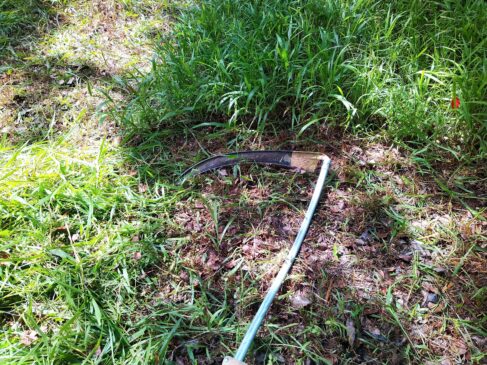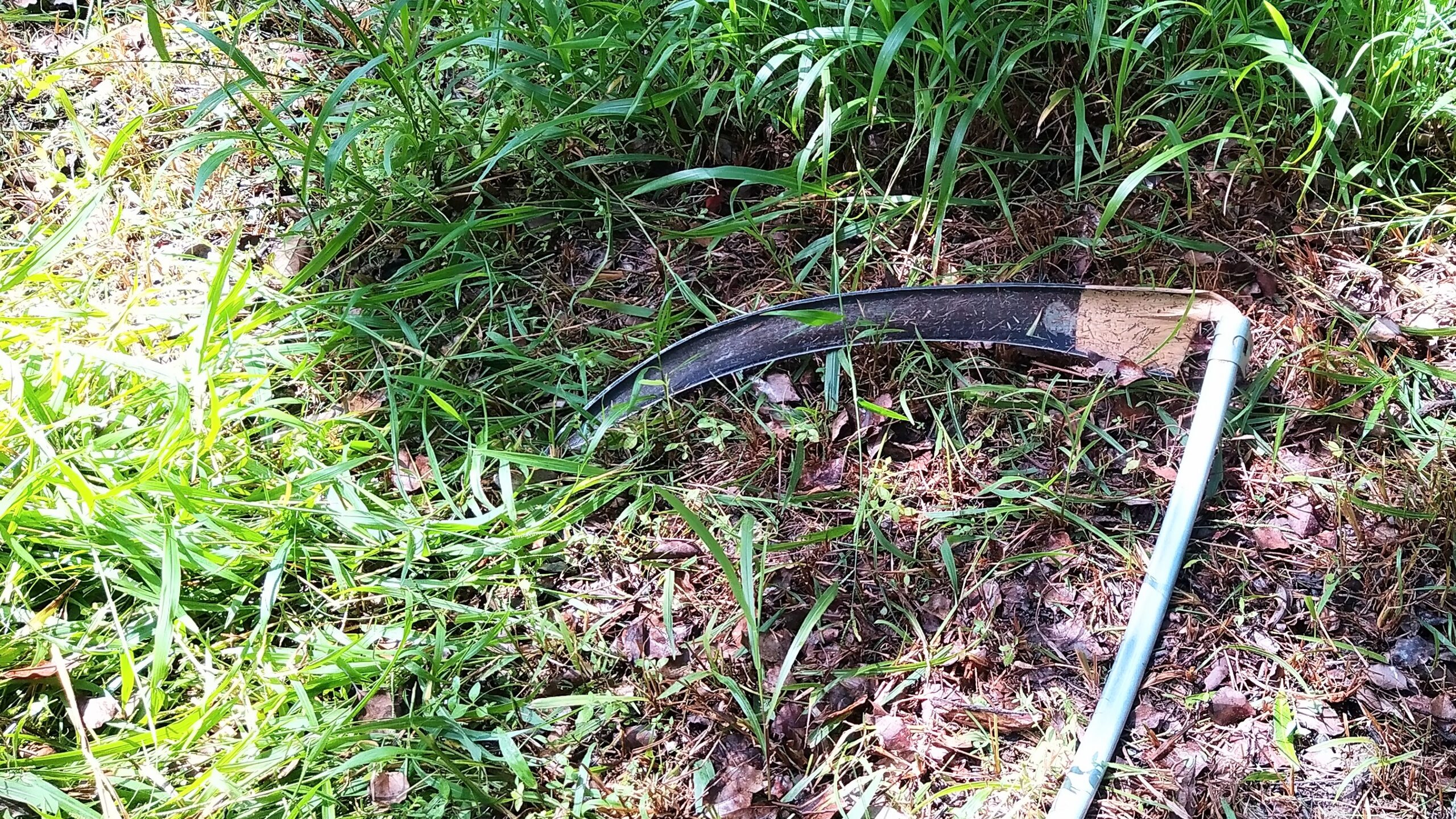First up, it’s appealing and enjoyable. To mow with a scythe is not necessarily hard work, and it doesn’t leave me with aches and sore knees like weeding and digging do. If you like the idea of being out in the early morning, just you, the scythe and maybe a dog, wet grass and birds singing, scything could be for you too.
But practically, I mow with a scythe because:
- A scythe makes good useful hay
- Wet conditions are an advantage rather than a problem
- Scythe mowing is suited to hilly country
- It’s quiet and doesn’t need protective equipment or fuel.

Good hay
There’s a gardening method based on mulching with hay (Ruth Stout), and it works very well, but problems with it can be:
- sourcing and paying for hay, and carting it home
- getting good hay that’s not contaminated with weed seeds or herbicides.
If you can make your own hay, you know exactly its quality. The hay I mow with a scythe can be leafy, or flowering grass stems, coarse stems and seed-heads, or weedy, and there’s a use for each type. I also control my hayfield. I can fertilise and lime it so that the nutrients from the soil end up in the grass, then in my hay, then in my vegetable plots. Because I use a lot of hay, it’s very handy to make my own.
The alternatives
Scything in this case is about managing meadows and making hay, and it really makes these accessible for a smallholder. Machine alternatives are a tractor with a slasher, a ride-on mower, or a line trimmer, and we use all three. We have a hilly property and it rains a lot, which means that the tractor is only good when it’s properly dry, which is fine for getting in on tall dry grass, but no good most of the year. The ride-on mower is great, and essential for getting in once the grass has really got going and becomes too thick and tall to walk through, but both slasher and mower tend to push over a lot of grass, which then gets either missed or mulched. The missed grass lies in rows, tangled up with the mulched grass, which is fine for just getting the grass down, but problematic for haying.
Line trimmers are an easier comparison with scything, but they still fall short. In direct contrast with a scythe, they are no fun to use. Mine is a harness type, and also requires a face mask and ear protection. It is noisy and makes my hands numb from the vibration of holding it. The vegetation becomes an aerosol which coats my visor, skin and clothes, and I button up my shirt so gunge doesn’t get past my collar. It is heavy to carry, and I also have to carry fuel and line. You’d think that those petrol Watts would bash away grass faster than a scythe, but in heavy grass progress is comparatively slow. There are metal blades for line trimmers, but both line and blade tend to mulch the grass, like the mowers. The swathe of a line trimmer is also smaller than a scythe, as you’re cutting a semi-circle rather than reaching right and left.
Why mow with a scythe
- The scythe cuts grass once and drops it into a windrow, making it easy to work with.
- Scything works best on wet grass early in the day, so you’re not waiting for a dry (and hot) afternoon to get going.
- Scythes work well on hilly slopes and tight spaces. You can scythe ditches and ponds.
- For fiddly work like orchards you’re standing and reaching in (not kneeling with a sickle) and you won’t damage trunks.
- They’re very portable. The only extras are the whetstone in its holster and the key in your pocket. A scythe and snath weigh a few kilos.
- When you mow with a scythe you know the quality of your hay, and if it’s weedy, coarse, or fine grade.

